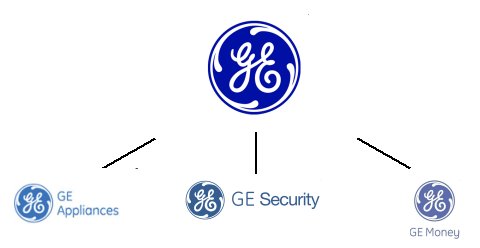What is the right brand architecture structure for your company? How to structure your brand portfolio depends on company culture, markets and customers, and goals.
Single Unitary Brand Architecture Structure
One brand creates a single powerful image, sometimes with a descriptor.

Marketing is more efficient. With one brand front and center, cross selling and cooperation are easier. The brand can lose focus as it must be everything to everybody. Acquisitions might be reluctant to have their brands disappear. New businesses might not fit under an inelastic single brand.
Multiple Brand Architecture Structure
This structure is favored by decentralized companies targeting diverse markets. Brands are independently run and even compete against other brands within the portfolio.

While acquiring and divesting companies is relatively simple, investors don’t always recognize the scope and value of the company as a whole. Supporting many brands is expensive and time consuming. Cross selling and cooperation are difficult.
Hybrid Brand Architecture Structures
Market pressures, organizational dynamics and limited budgets often make a hybrid approach more realistic.
 Companies use models with varying degrees of flexibility. Often the corporate brand endorses the product or service brand or the product or service brand functions as a sub-brand of the corporate brand.
Companies use models with varying degrees of flexibility. Often the corporate brand endorses the product or service brand or the product or service brand functions as a sub-brand of the corporate brand.
More on Brand Architecture:
What is Brand Architecture
Brand Architecture: Strategic Considerations
Does Your Brand Architecture Support Your Business Strategy?
